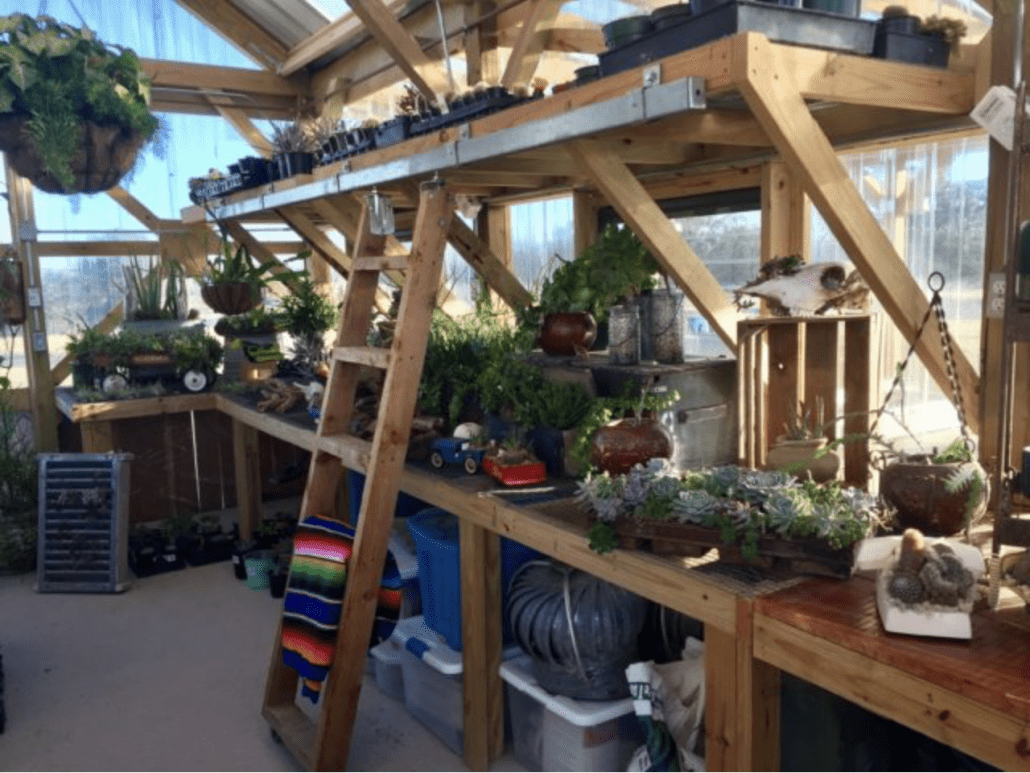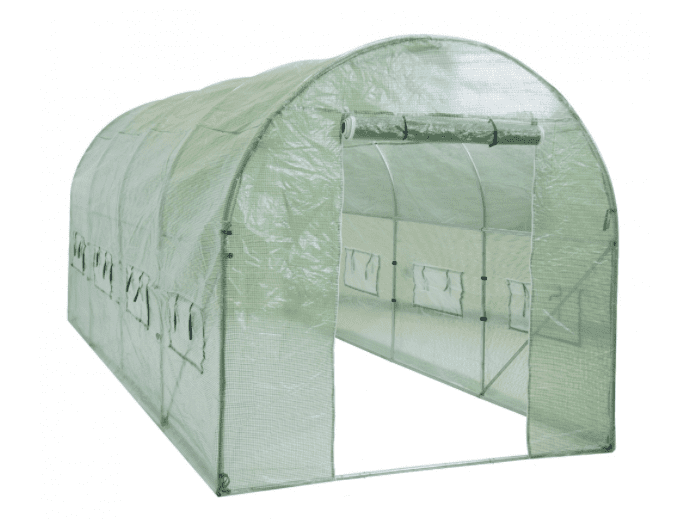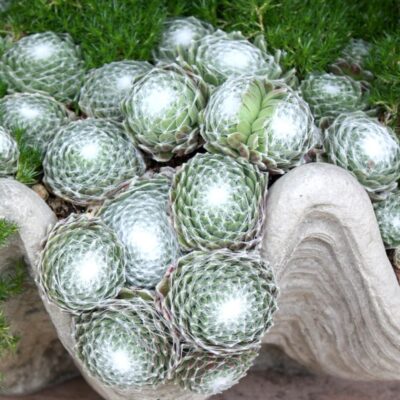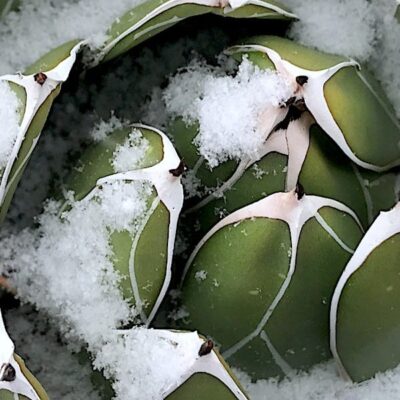
Ways to Overwinter Succulents
These four ways to overwinter succulents give you several options, depending on how cold it gets where you live. Most varieties can't handle temps below 32 degrees F.
These common winter conditions can lead to damage or death for dormant (not actively growing) succulents:
-- soggy soil (causes roots to rot)
-- excess rainfall (engorges cells)
-- frost (causes cell walls to burst)
Some succulents do have a built-in antifreeze. Those indigenous to the Americas, such as cacti and agaves, or to northern climates like many sedums and sempervivums, tend to fare better than those from Madagascar and South Africa (kalanchoes, aeoniums, aloes and crassulas). But no succulents want a lot of water when dormant, nor high humidity at any time of the year. All prefer well-draining soil, bright but not intense light, and good air circulation.
#1: Cover your plants
If you live where frost is occasional and lasts only a few hours (inland valleys of Southern CA), cover vulnerable, in-ground succulents with bed sheets when there's a frost advisory for your area. Or use what nurseries do: Pellon nonwoven fabric or Agribon’s floating row cover. These are made of spun nylon, like fusible interfacing without the fusible part. It will protect about 2 to 4 degrees below freezing. For a bit of extra warmth, use C-9 Christmas light strings (the old-fashioned kind).
Also:
-- Don't peel away dry leaves attached to a succulent's trunk or stem. They protect it from temperature extremes (cold and hot).
-- Keep succulents on the dry side. Cells that are turgid are more likely to burst when the liquid within them freezes and expands.
-- Move cold-sensitive succulents beneath a deck, tree or eaves. Such structures help to keep heat from dissipating and protect leaves from falling ice crystals.
-- Or place pots against walls, hardscape, boulders and/or shrubs that absorb and slowly release the day's heat. South- and west-facing exposures do this best.
If you live in Zones 8 or lower, grow tender succulents as annuals or in containers that you overwinter indoors. These members of my Facebook community graciously shared their winter set-ups:
#2: Outdoors, Temporary Greenhouse
Candy Suter, Roseville, CA (near Sacramento): Midwinter nights may drop into the 20s F but seldom go lower than 25 F. Candy moves her succulents into a small walk-in greenhouse (center) or a gazebo (right), which she covers with 5mm plastic to hold in warmth. She anchors the plastic along the bottom, secures the seams with duct tape, and adds a small heater with a fan on the coldest nights.

#3: Indoors, shelves with lights
Pat Enderly of Virginia Beach, VA: Midwinter lows average 32 F. Pat brings her plants indoors and tucks them into shelving units she purchased online. Each shelf has a waterproof tray, and each unit is lit by two T5 bulbs. "They do a wonderful job of keeping my succulents from etiolating (stretching)," Pat says, adding that the lights, on timers, stay on from 7 am to 7 pm daily. Pat moves her succulents indoors in Sept. and Oct. and takes them outside in April.
#4: Climate-controlled greenhouse
Tenaya Capron of Buffalo, TX: Although average midwinter lows hover above freezing, occasional winter lows may drop into the single digits. Tenaya and her husband built this 24x20 free-standing greenhouse, which they outfitted with exhaust and overhead fans, an overhead heater, and double sliding barn doors on either end. I love the library ladder, don't you?
Resources
Books
- Designing with Succulents (2nd ed.) See the section on Cold-Climate Succulent Gardens.
- All my books show design ideas and give care and cultivation for Sedum and Sempervivum.
- The Plant Lover’s Guide to Sedums, by Brent Horvath (Timber Press)
- Cacti & Succulents for Cold Climates, by Leo Chance (Timber Press)
- Hardy Succulents: Tough Plants for Every Climate, by Gwen Kelaidis, Photos by Saxon Holt (Storey Publishing)
- Sempervivum: A Gardener's Perspective of the Not-So-Humble Hens-and-Chicks by Kevin Vaughn
Videos
Related info on this site
How to Grow Tender Succulents in Cold, Northerly Climates
With the exception of sempervivums, jovibarbas, many sedums and yuccas, and certain cacti and ice plants, the majority of succulents are frost-tender. Although they can tolerate temps down to freezing and in excess of 90 (if shaded), between 40 and 80 degrees is ideal. But you can grow any succulent, anywhere, if you understand its needs.
Cold Hardy Succulents: Details, Photos and Varieties
Cold-Hardy Succulents: Details, Photos & Varieties Looking for succulents that go below freezing? You’re in the right place! About cold-hardy succulents The common cold-hardy succulents shown here can handle northern winters, snow, rainstorms (if given excellent drainage) and summer dry spells. Sedum (stonecrop) Trailing varieties are lovely as ground covers and in rock gardens, terraces and hanging…



Thanks much for publishing this. Helpful to me come as I’m just getting started and I live in the Tucson Foothills. Can’t believe nobody else ever complimented you before
Hi Michael — You’re welcome! Glad I could be of help. Debra